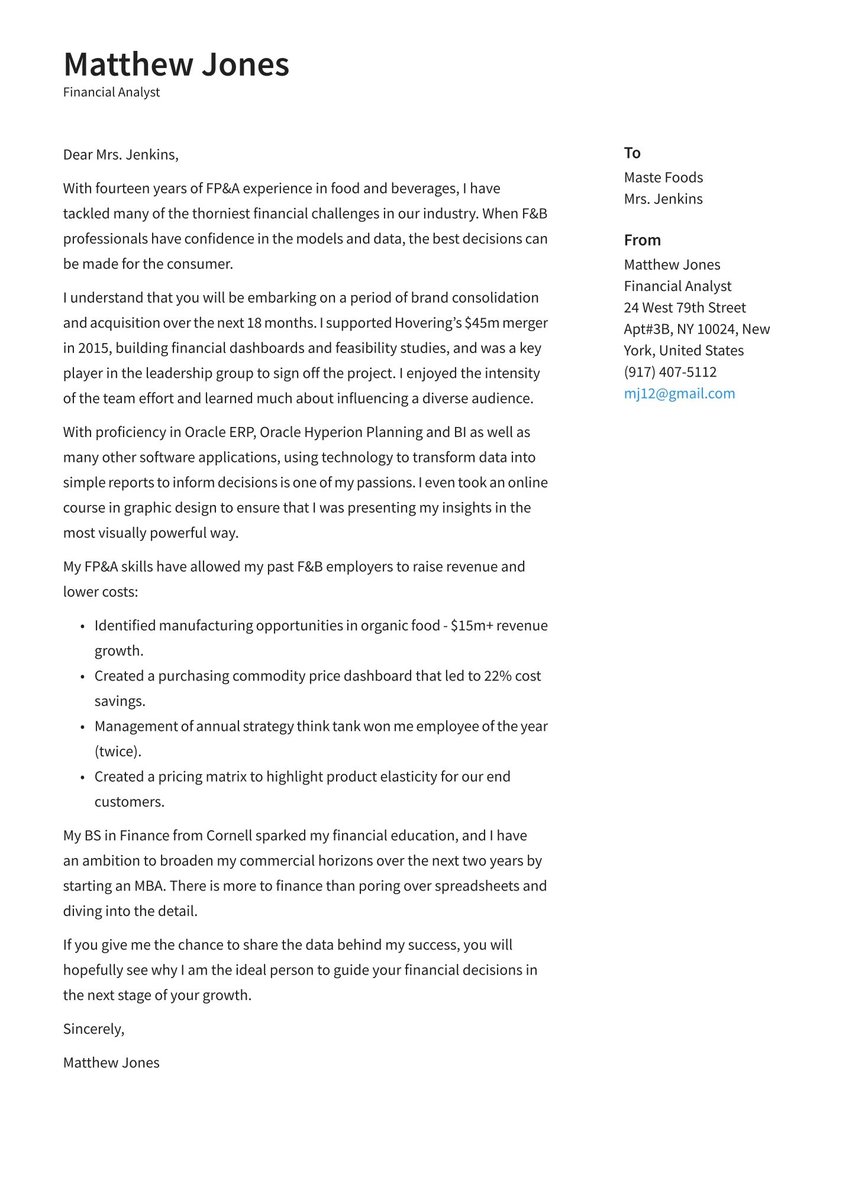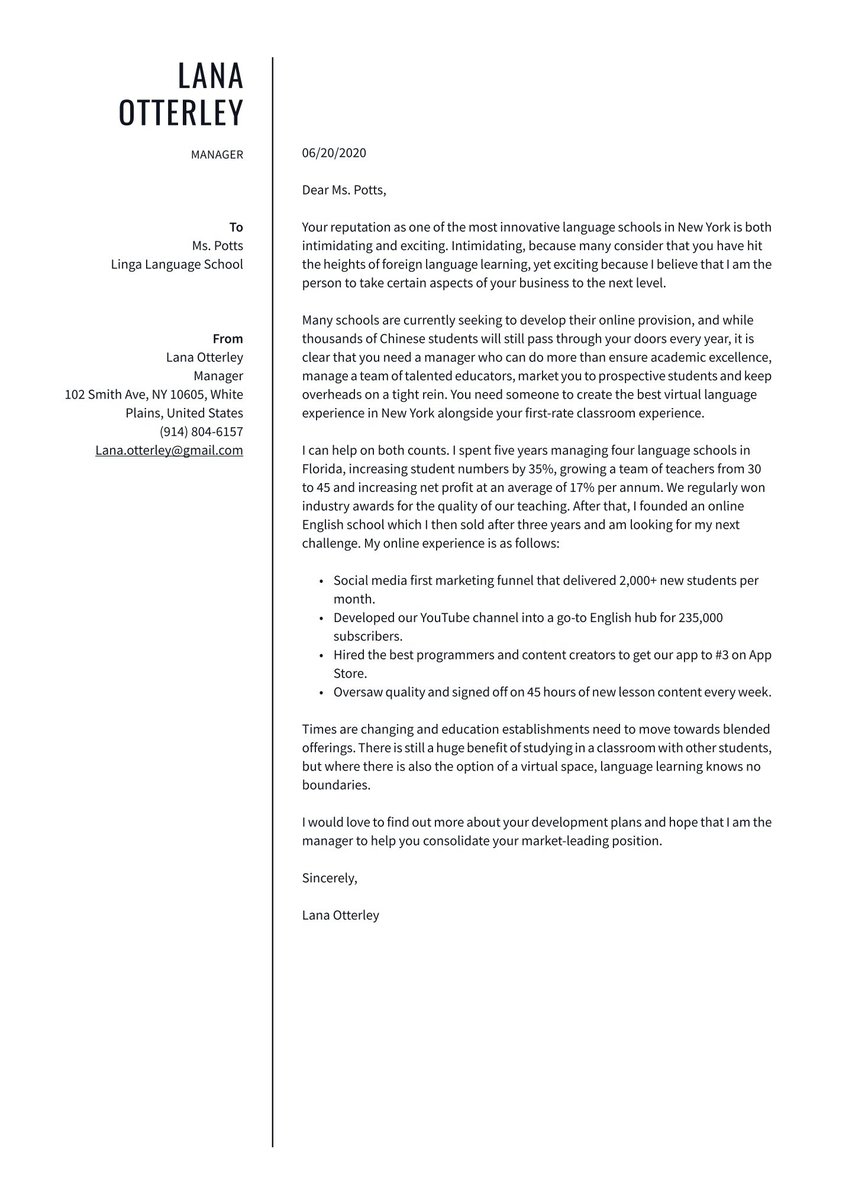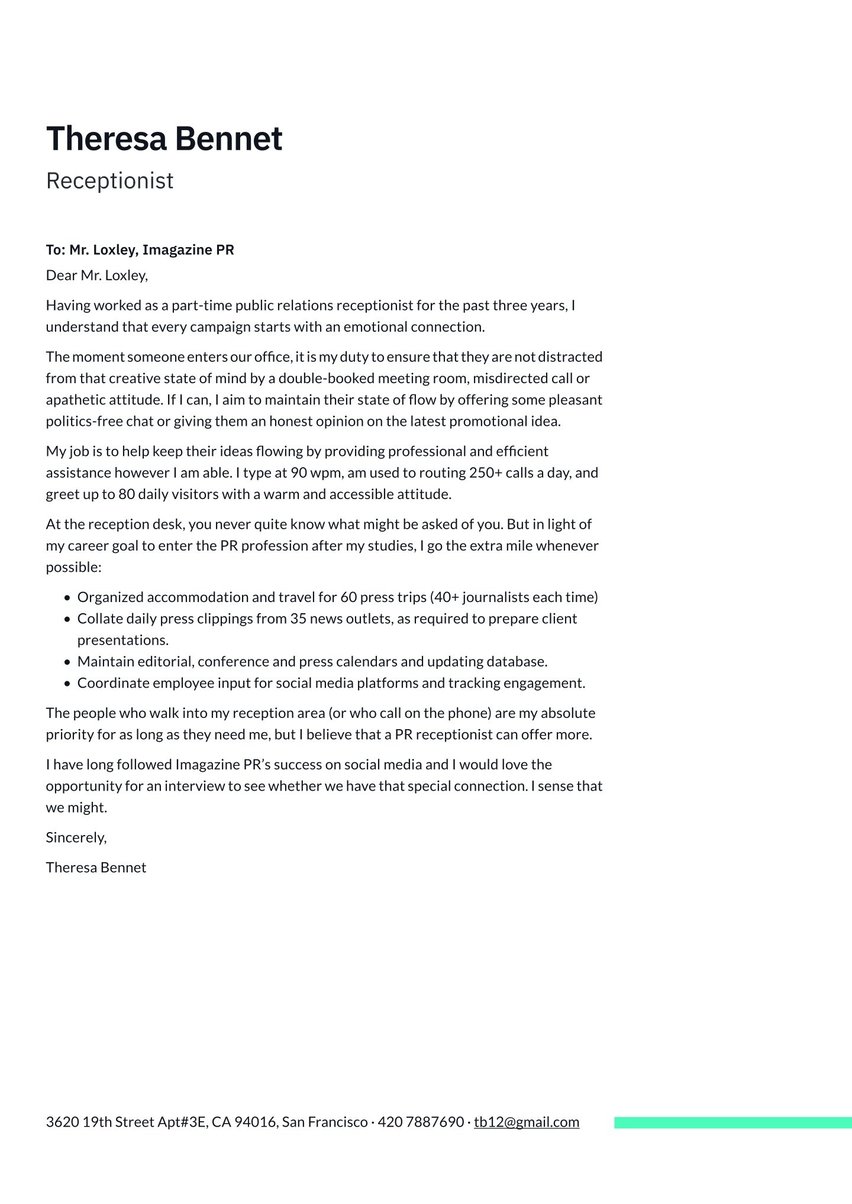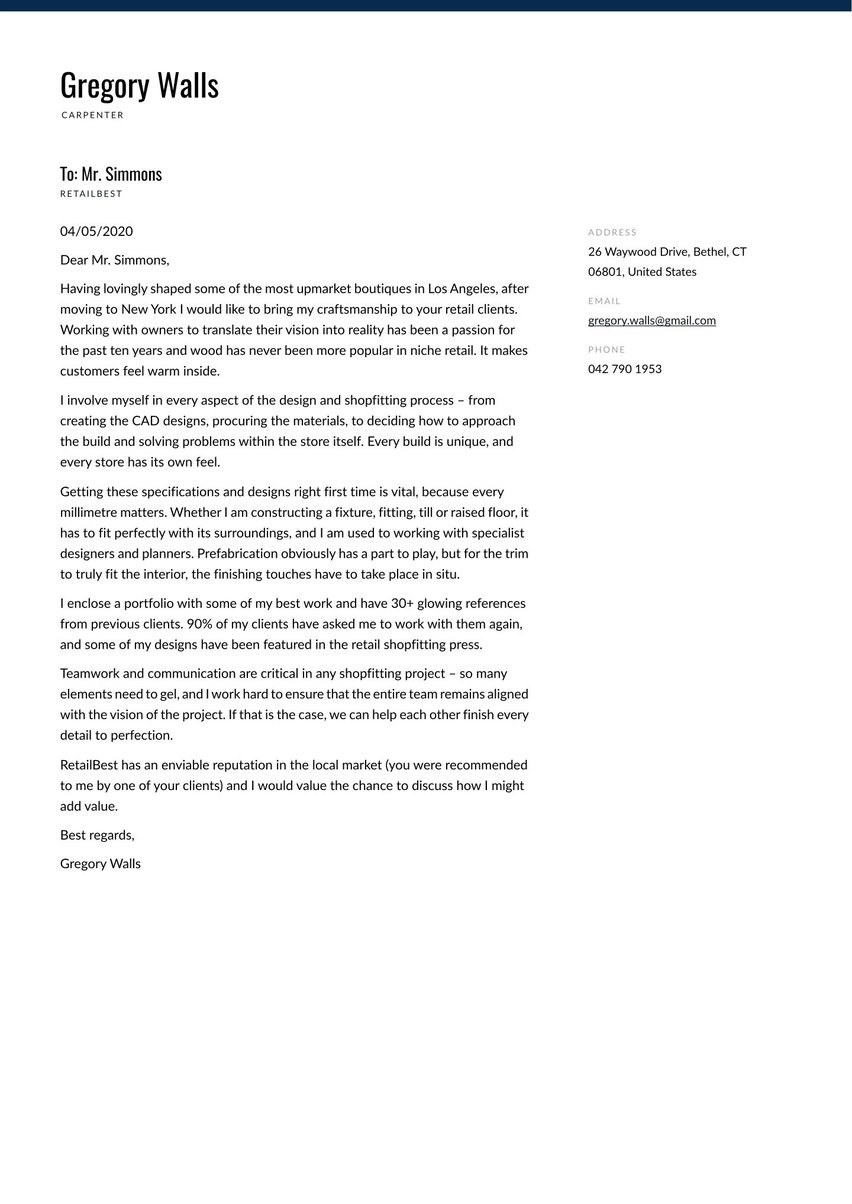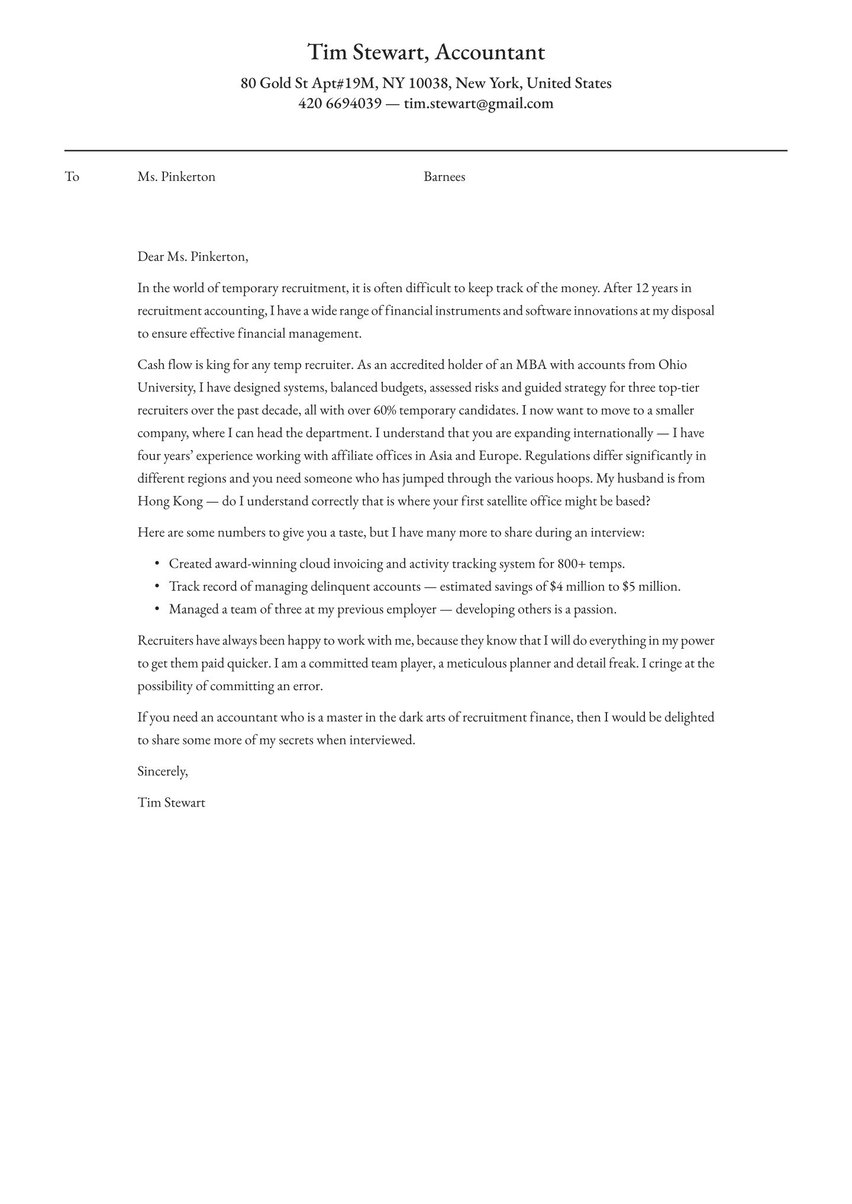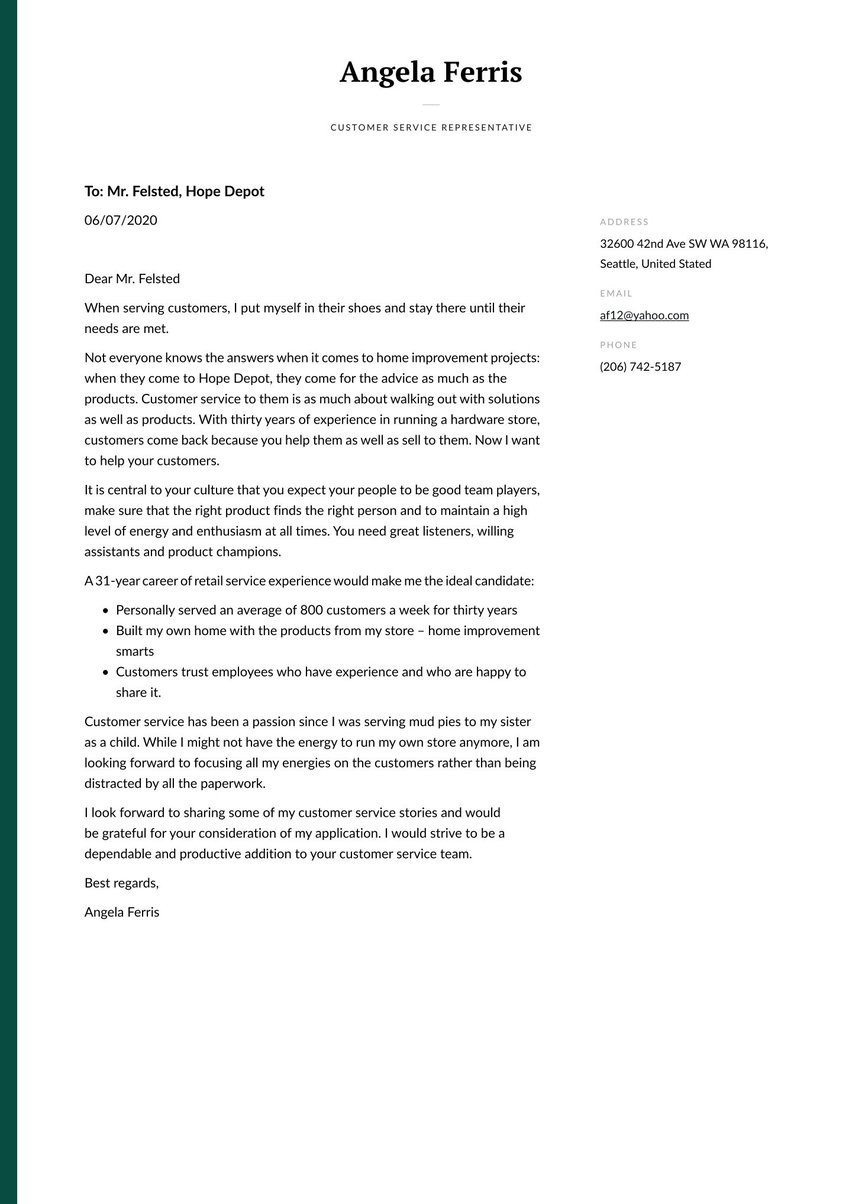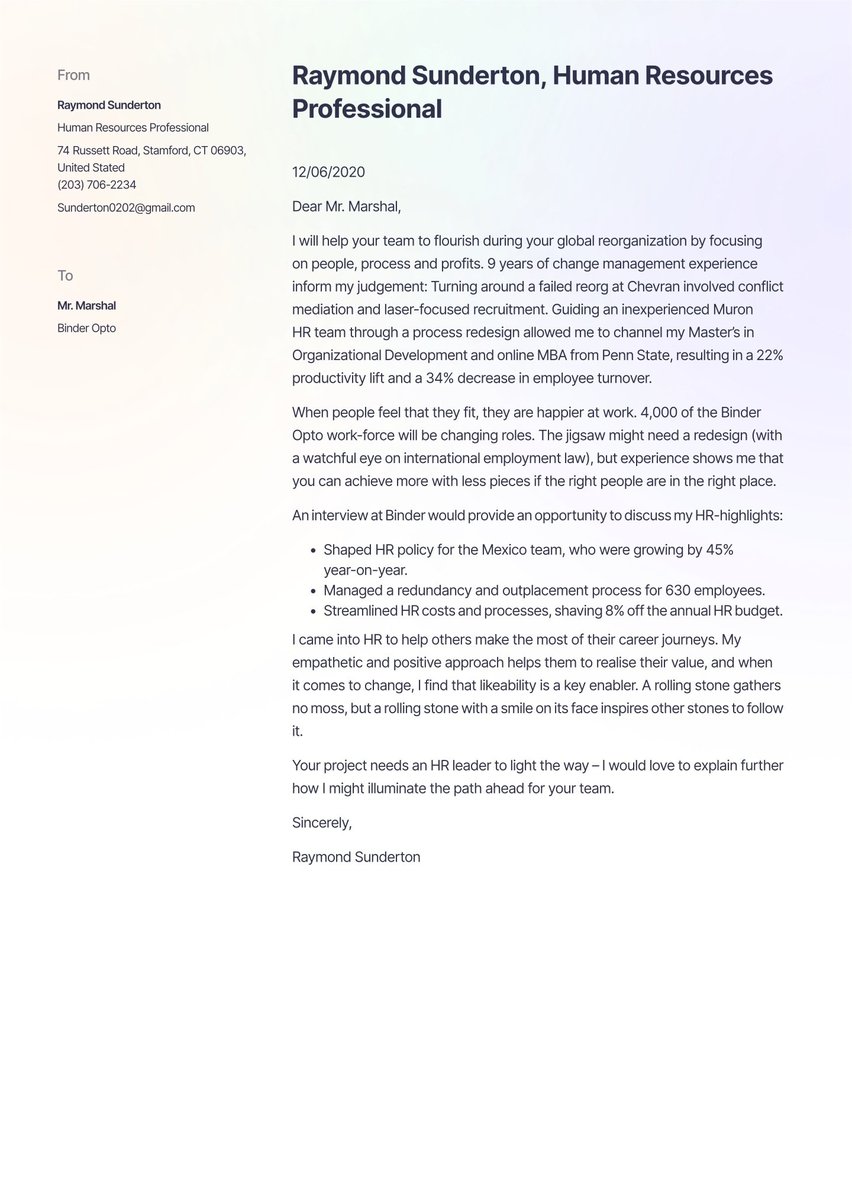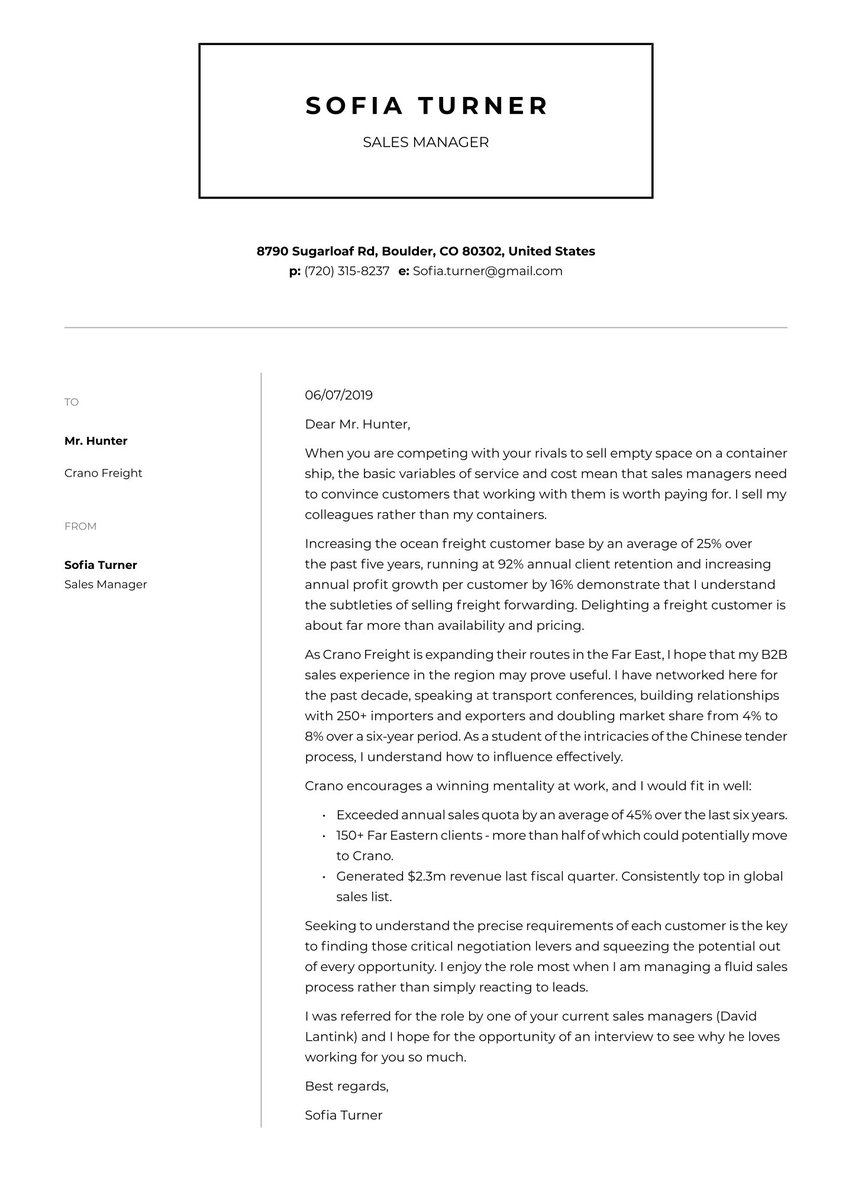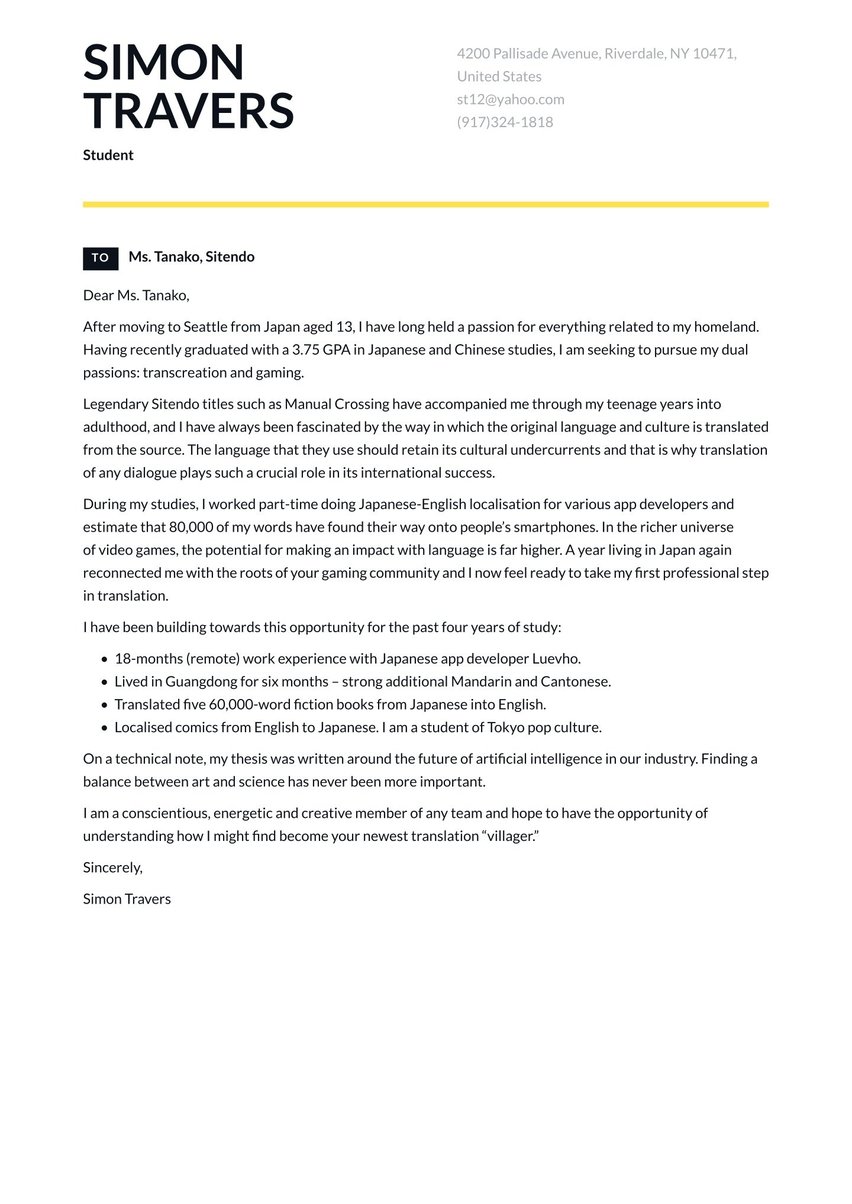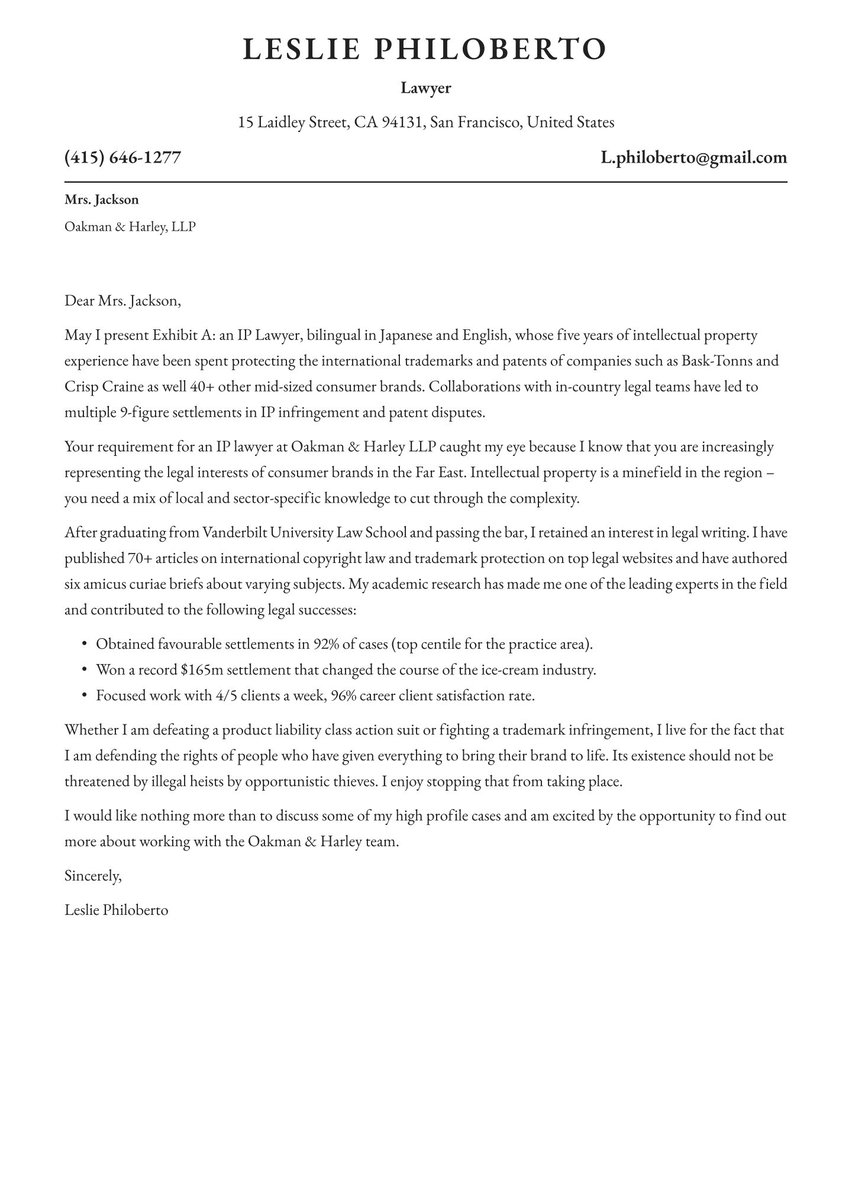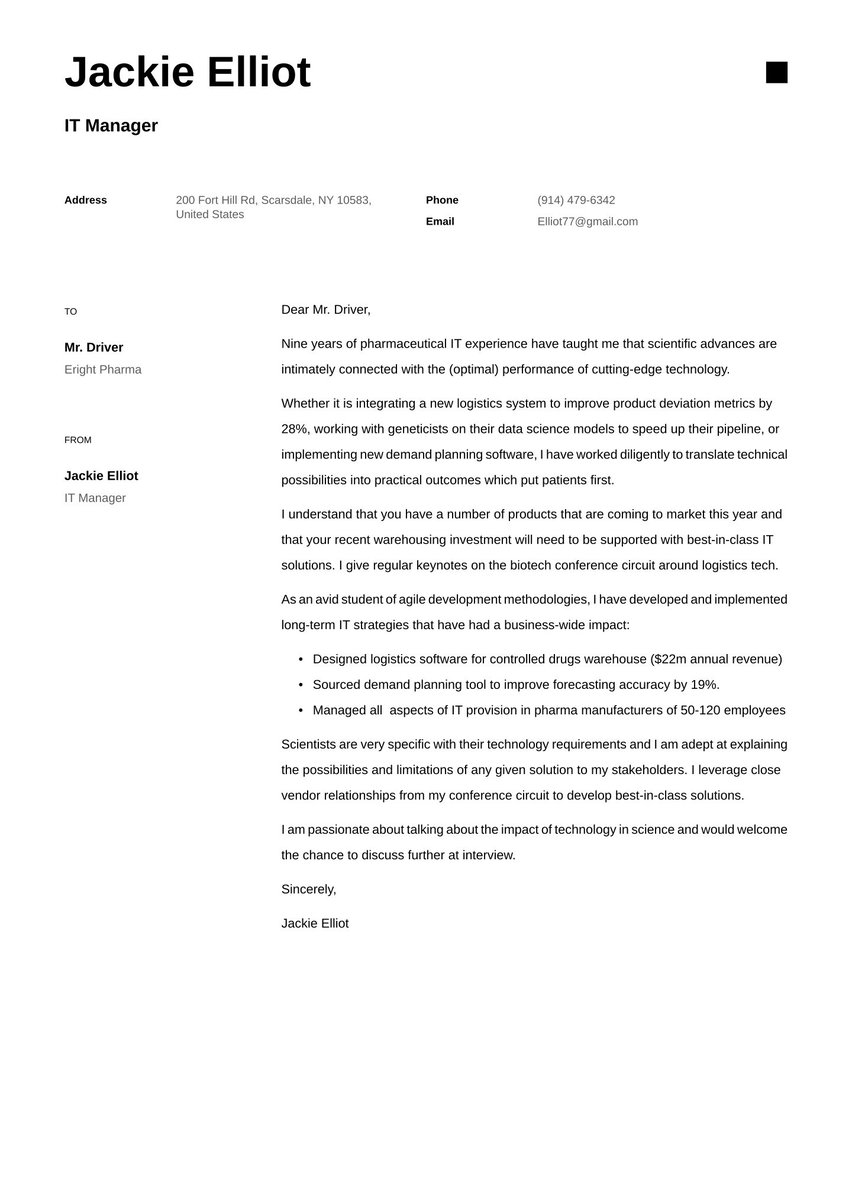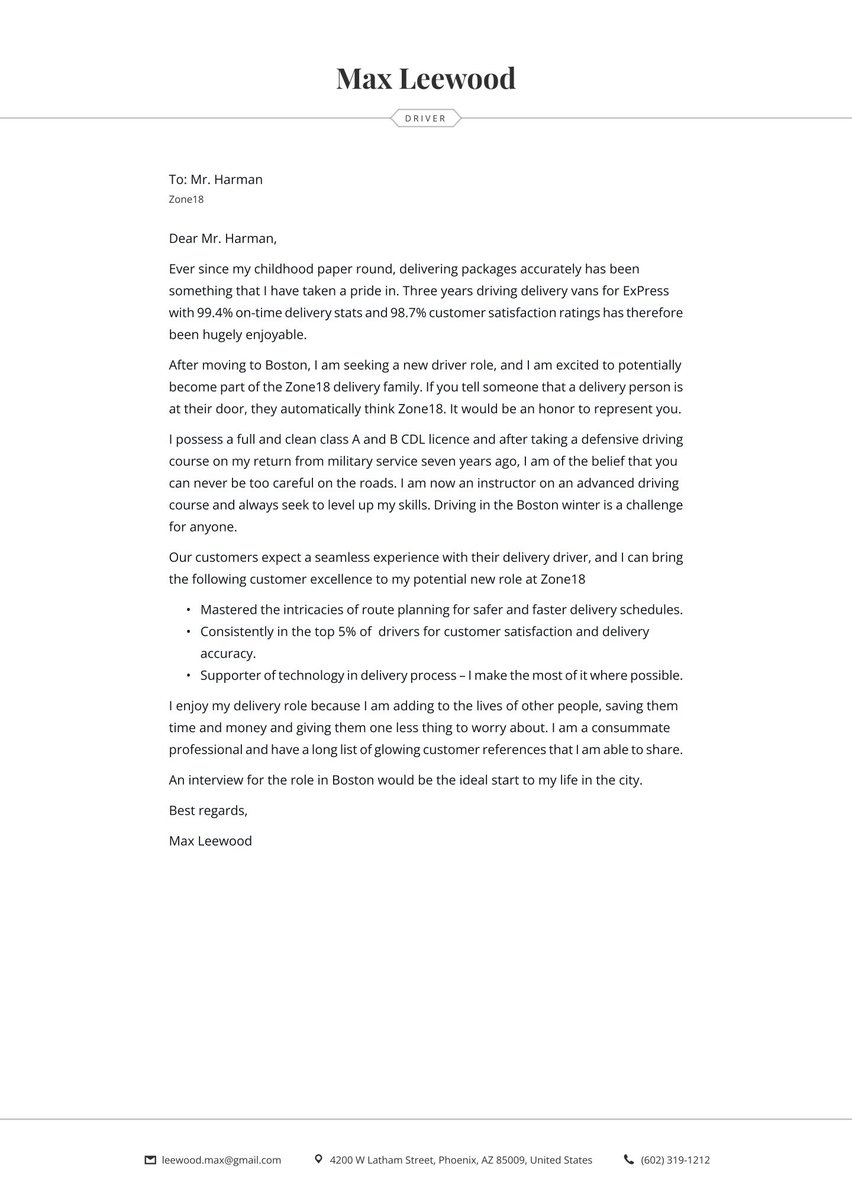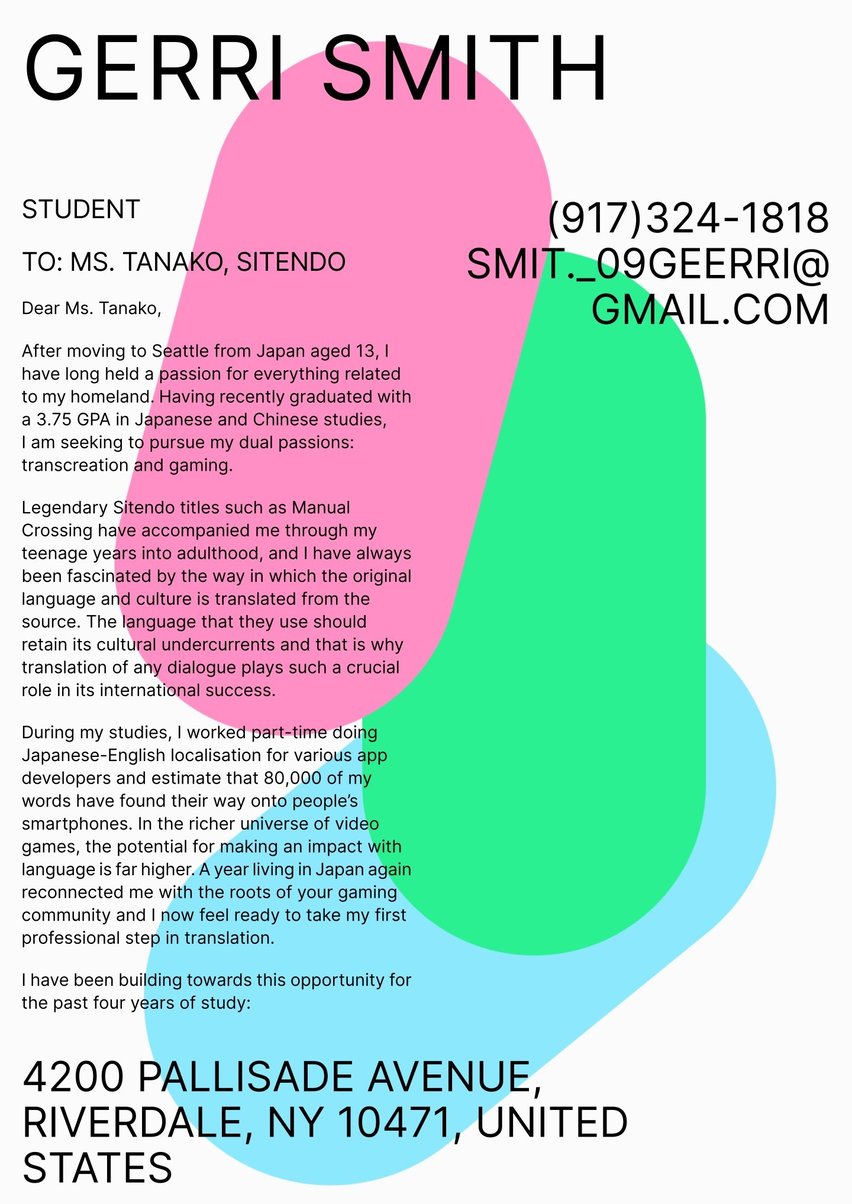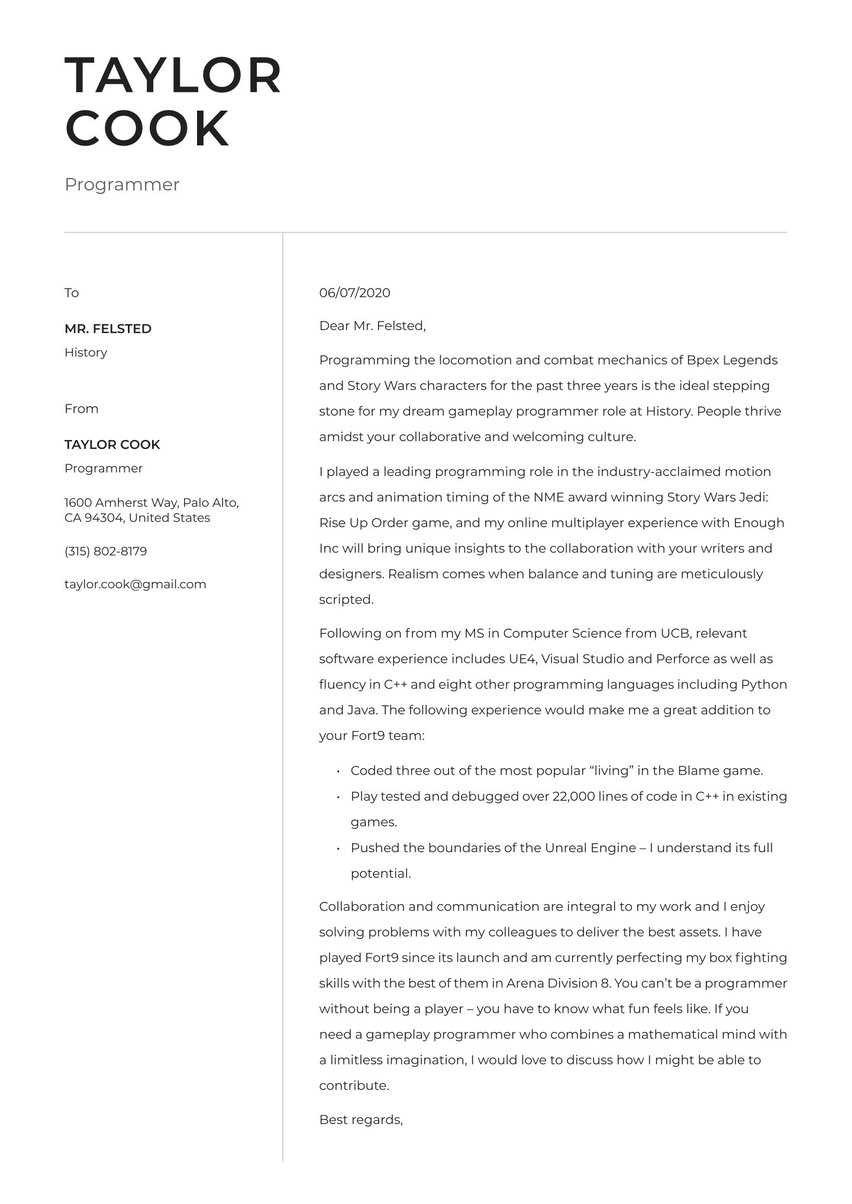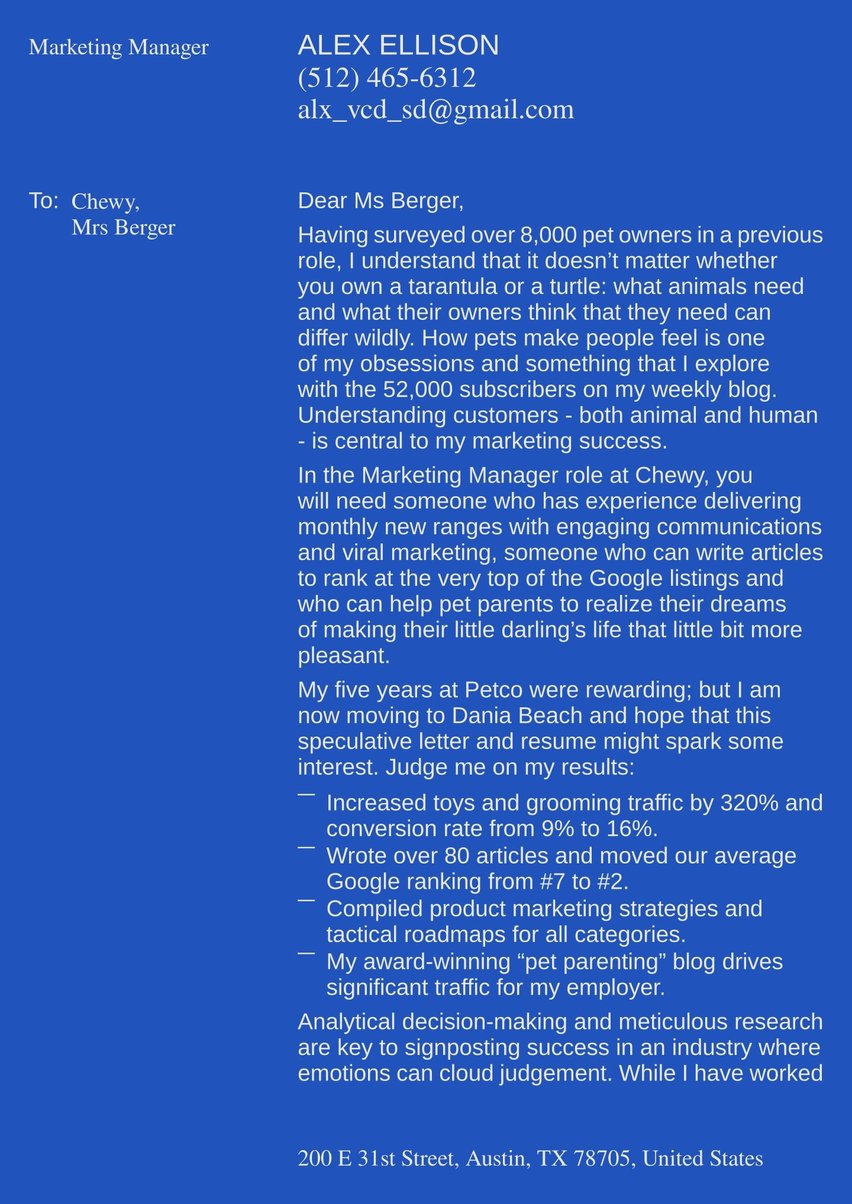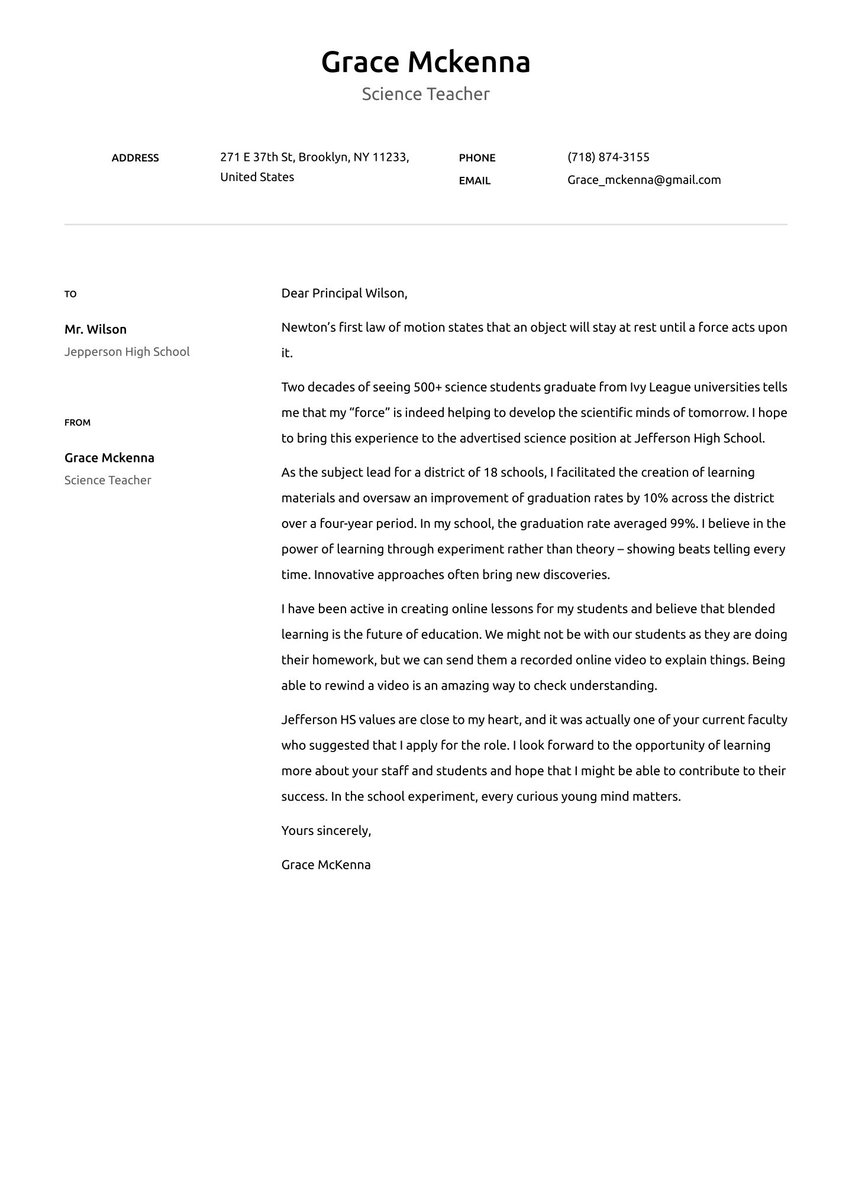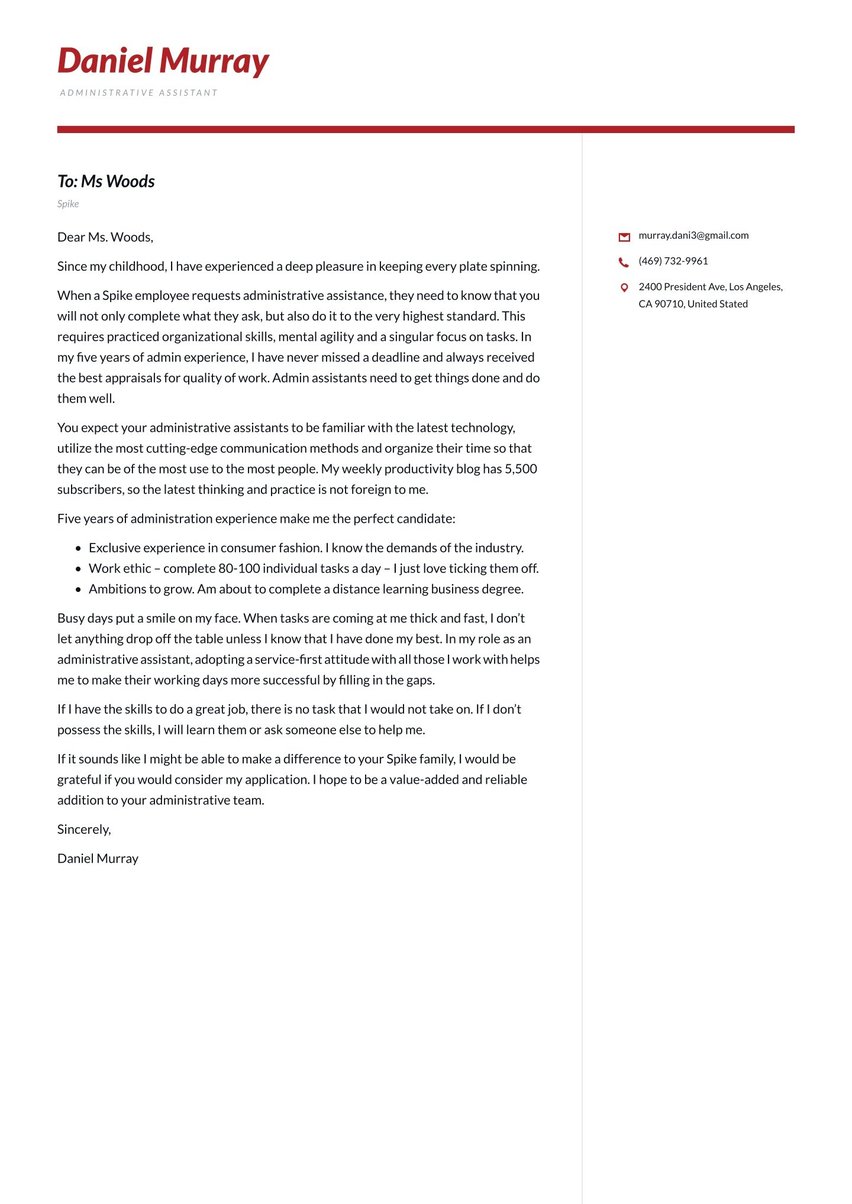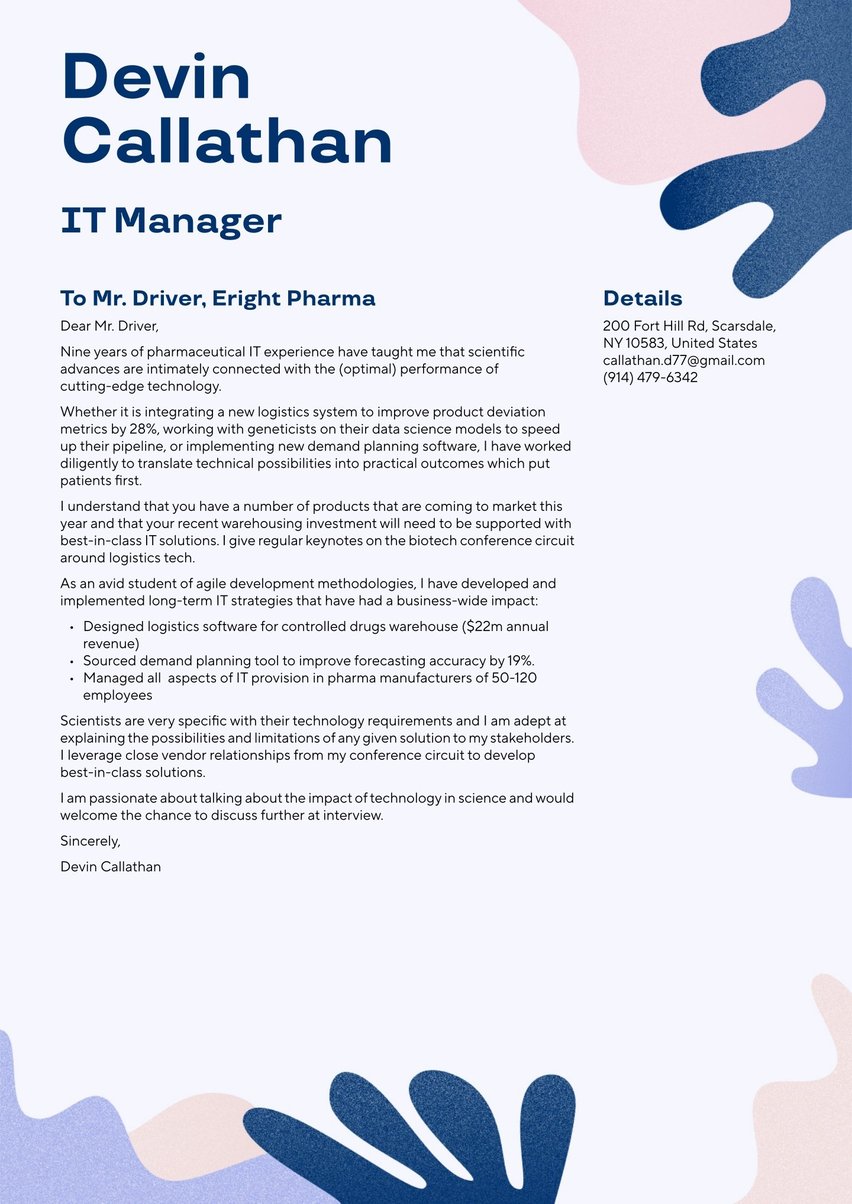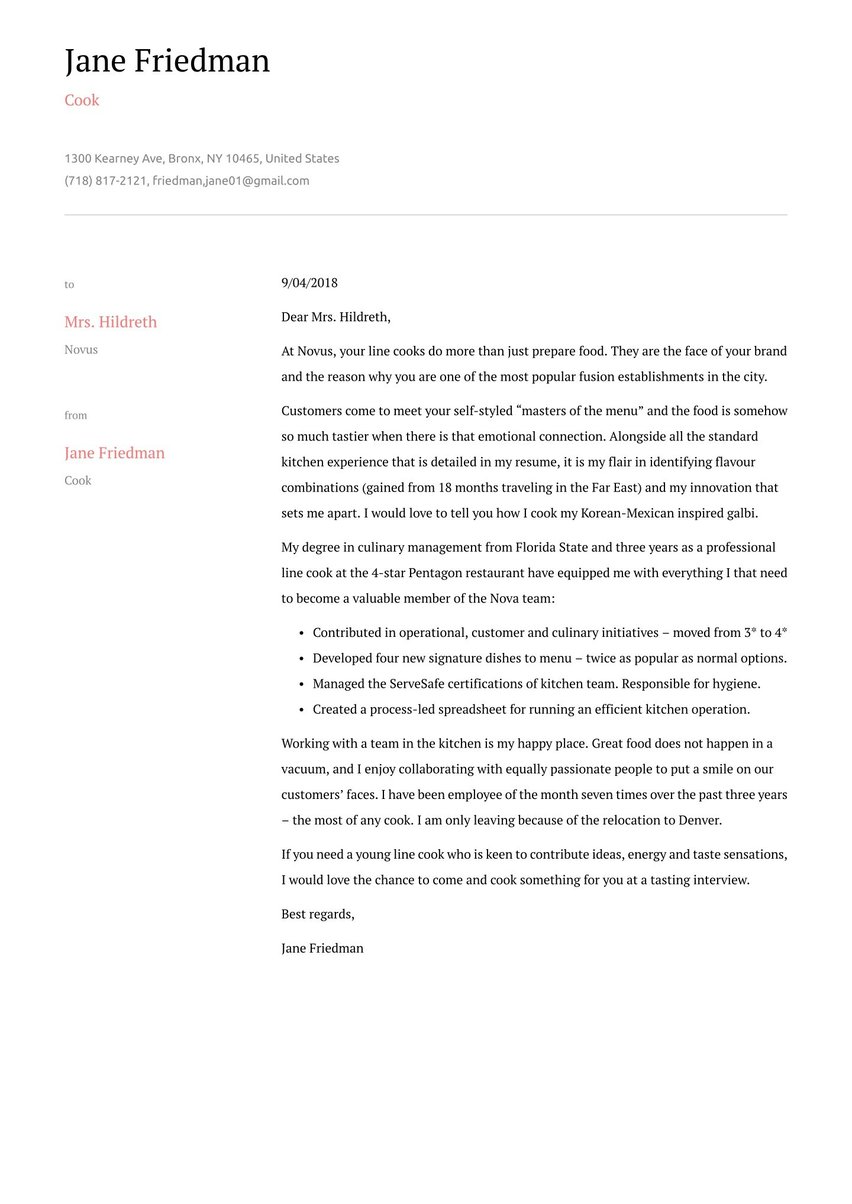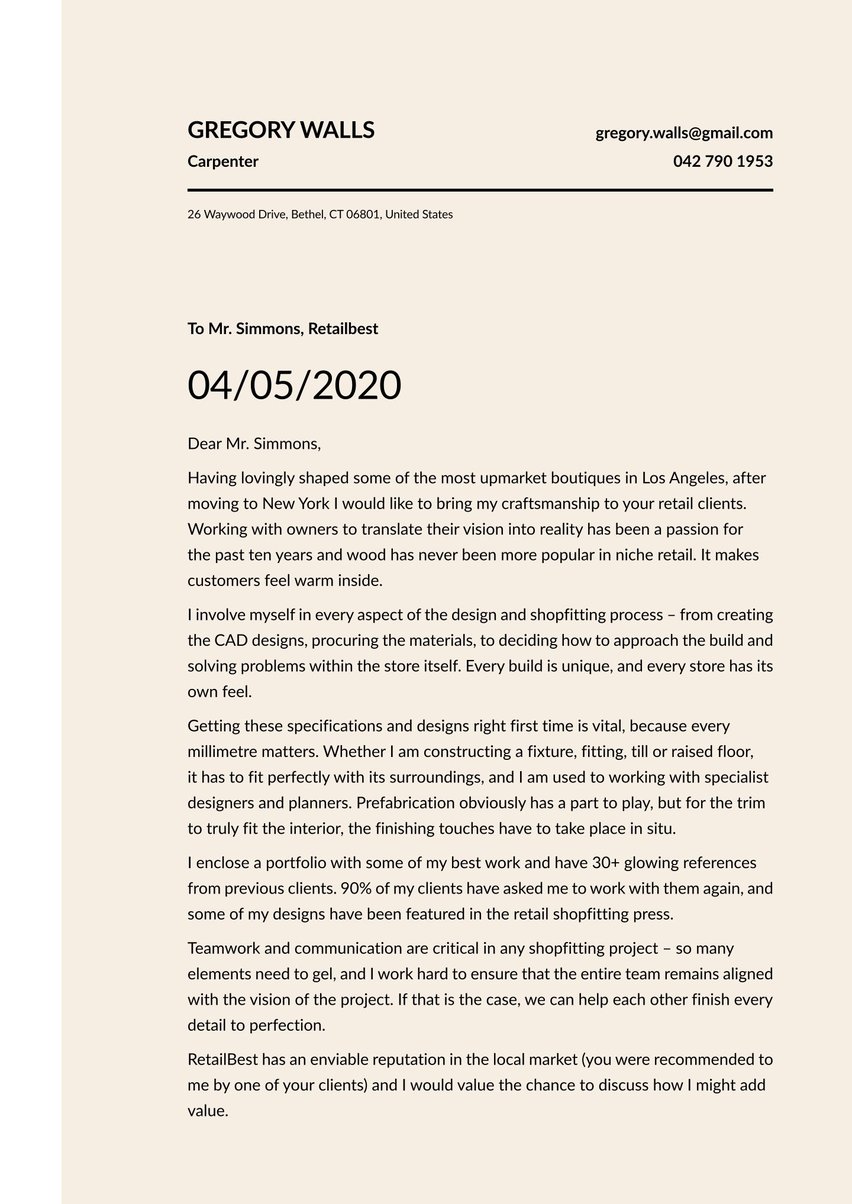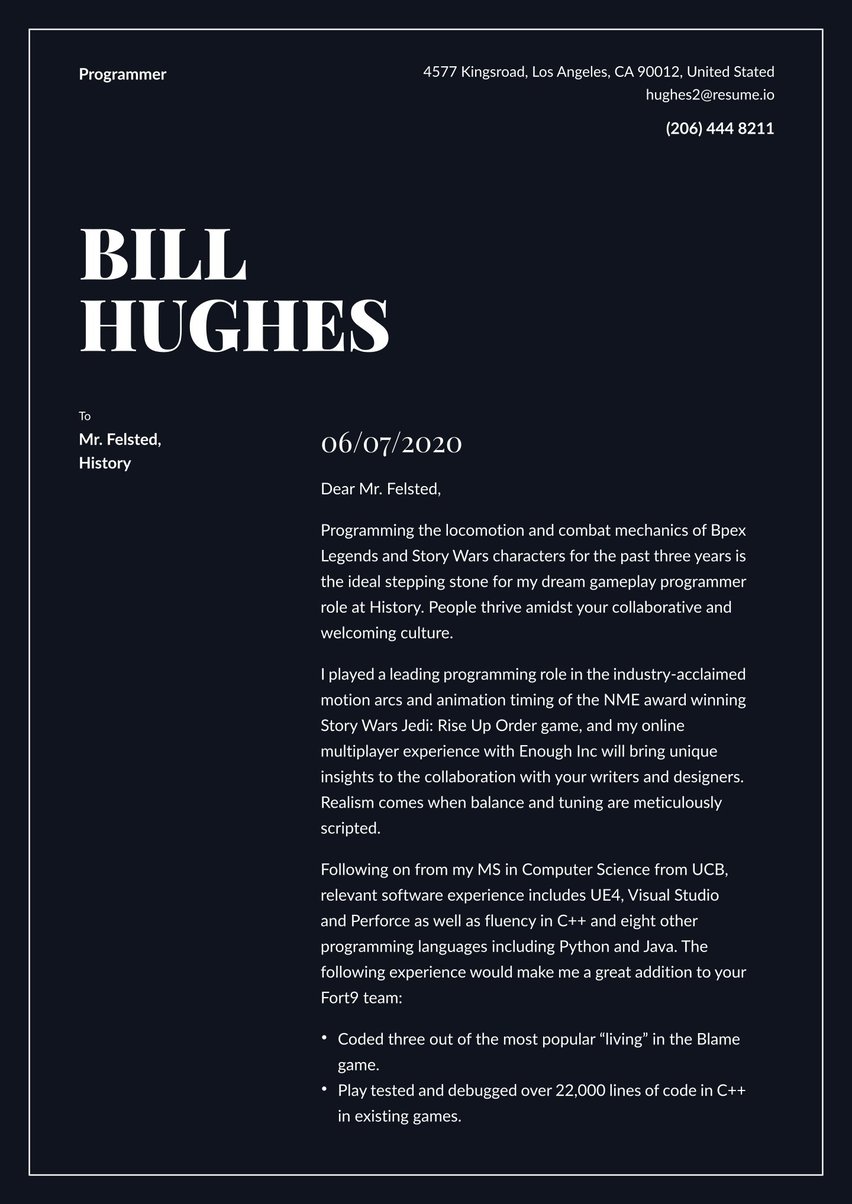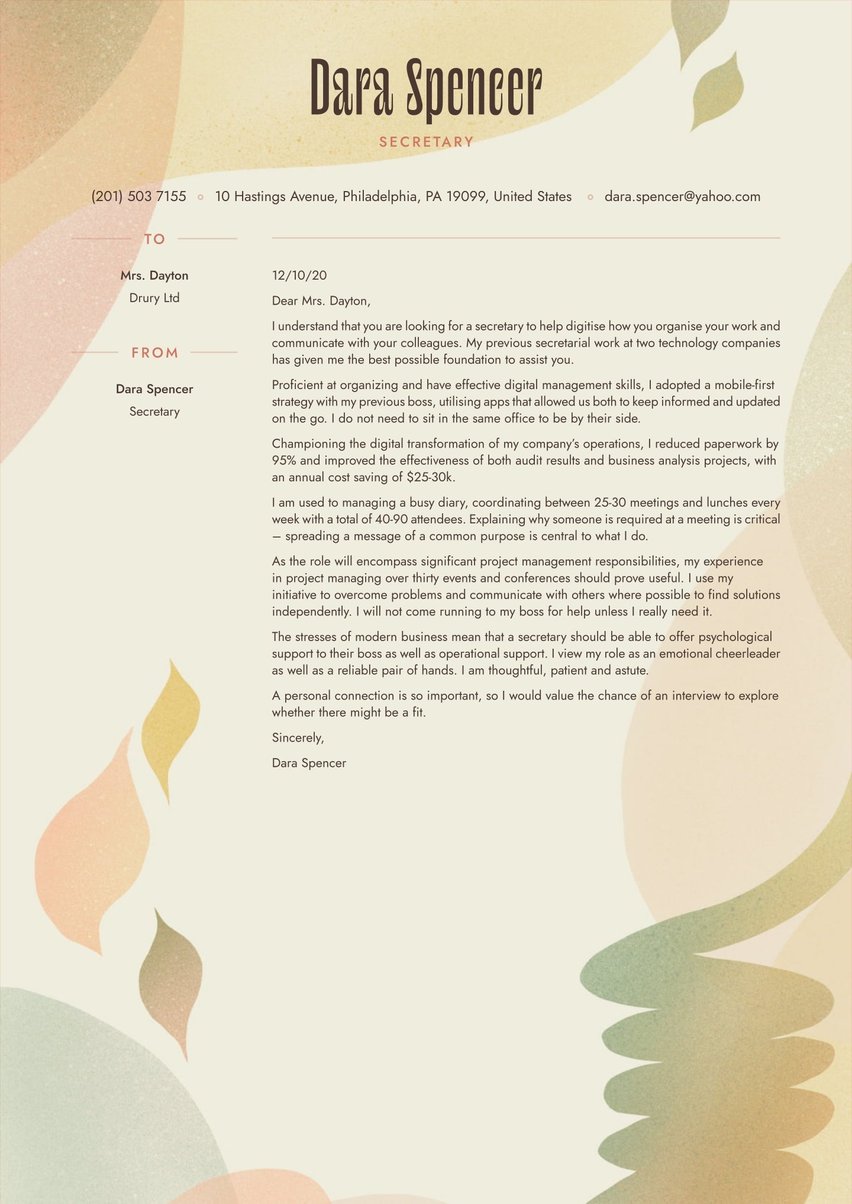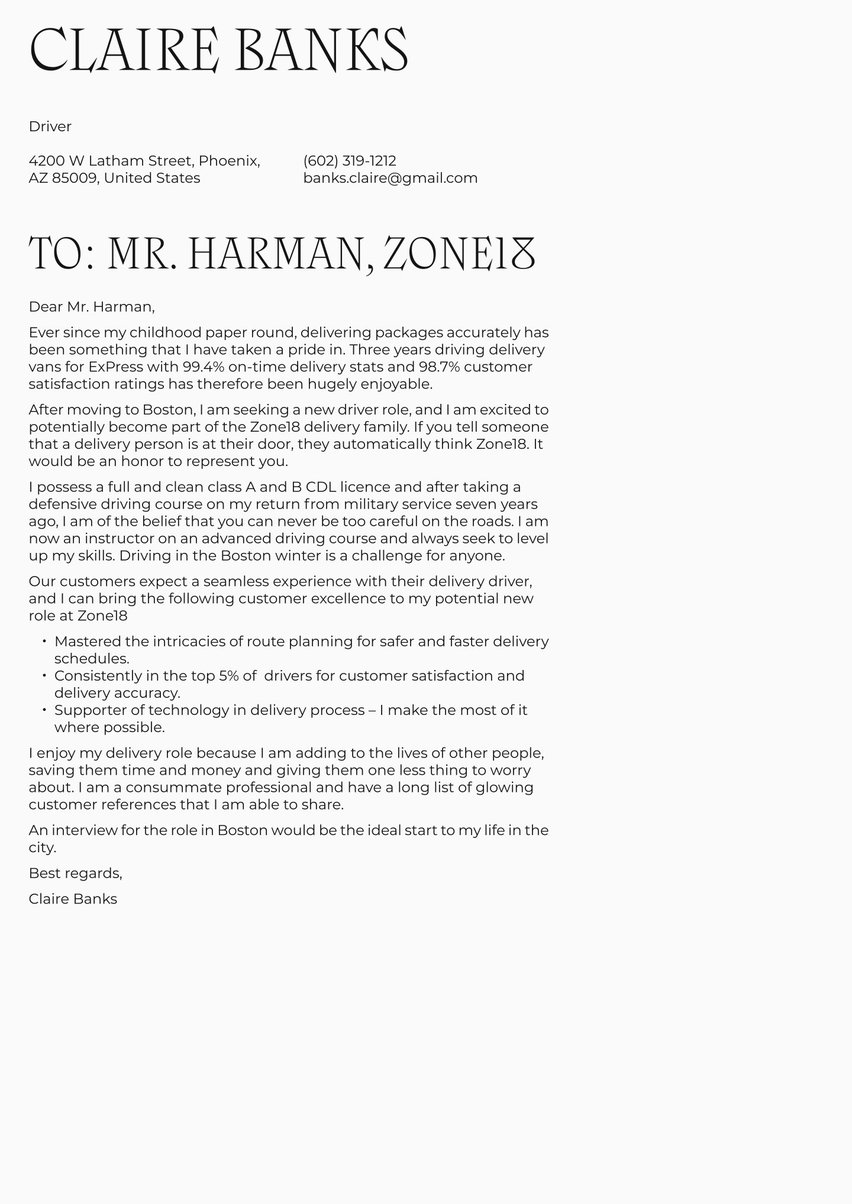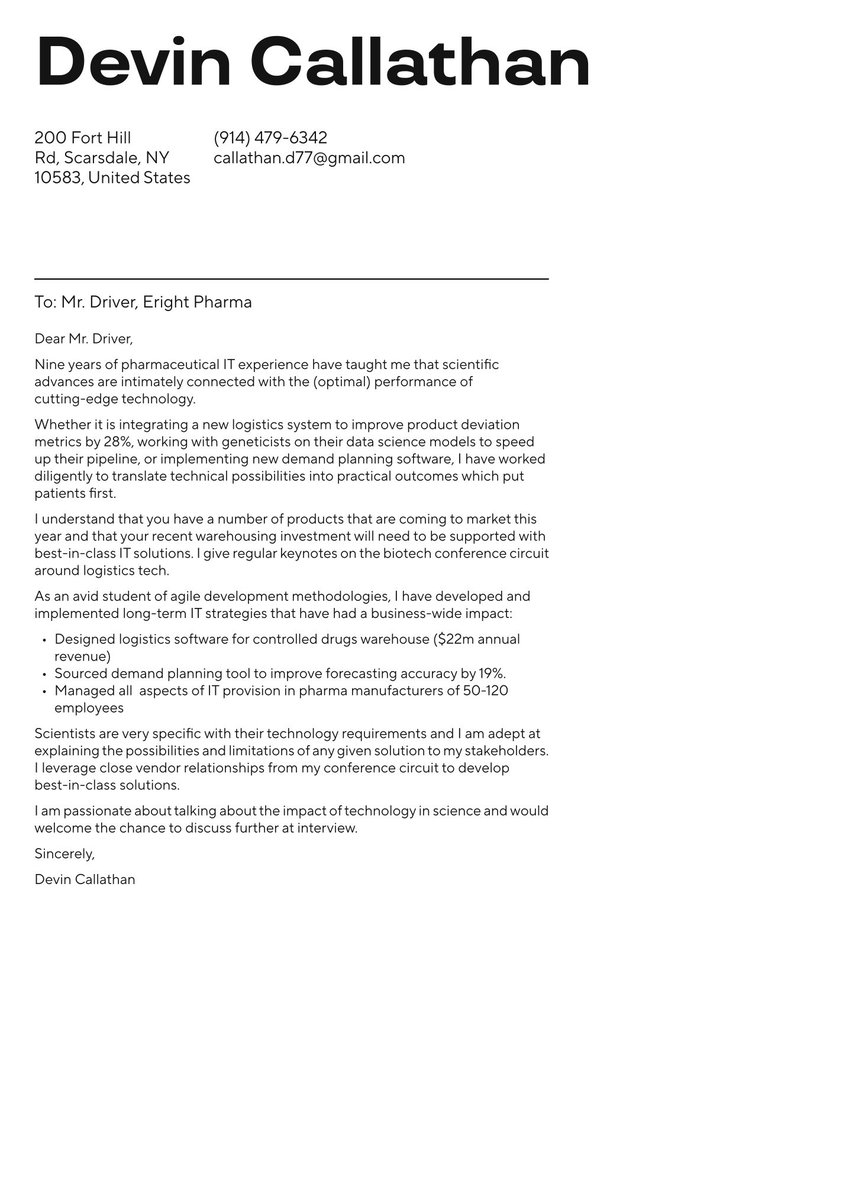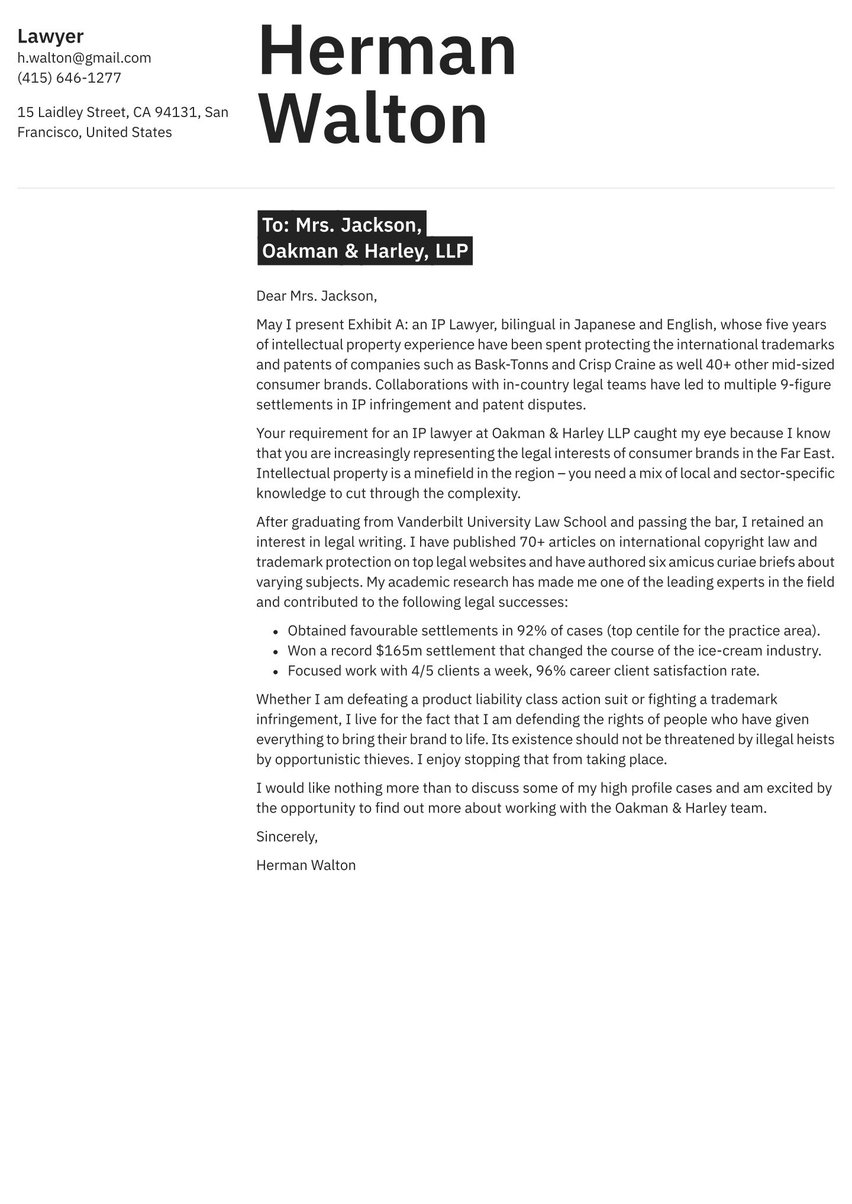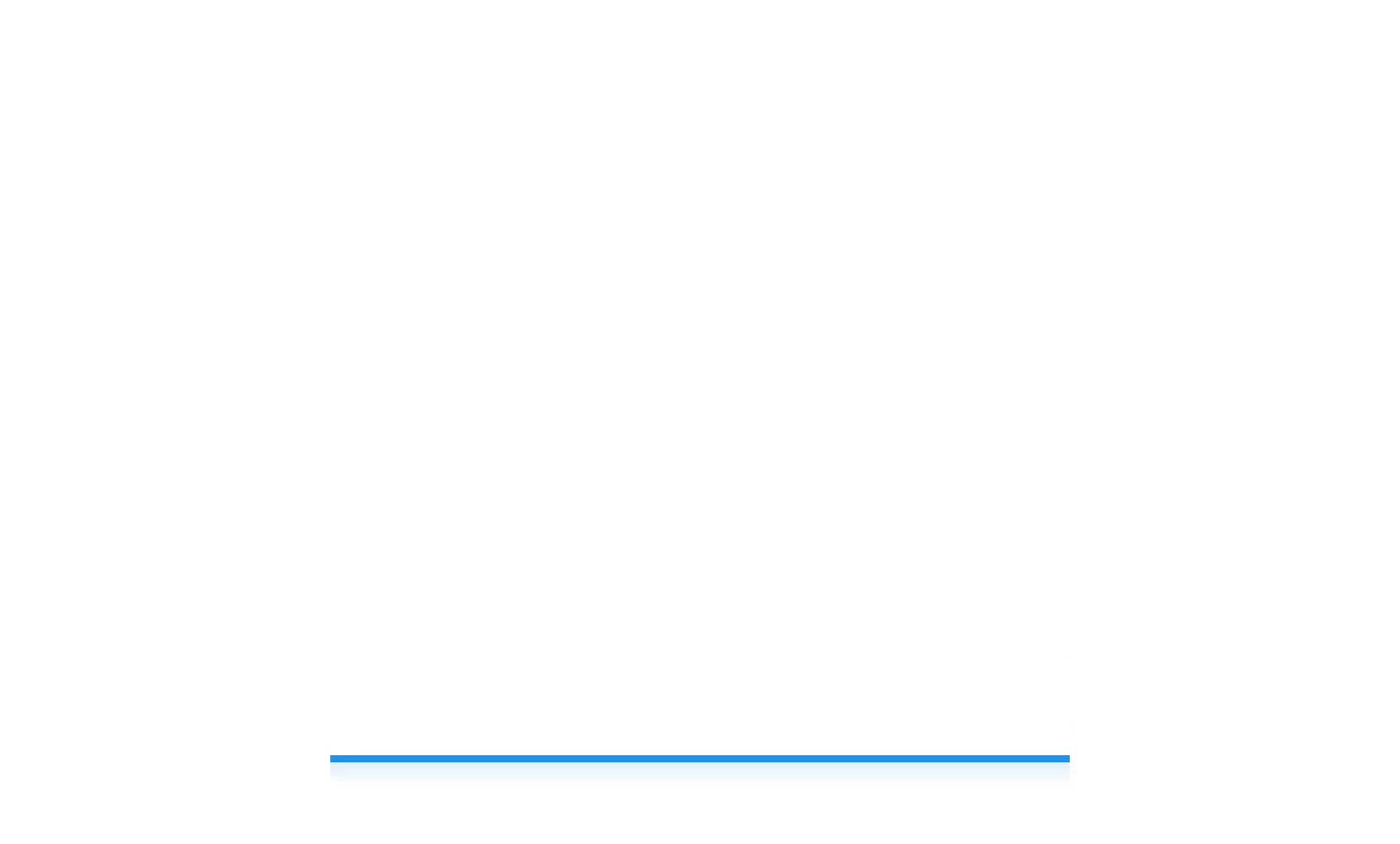As an interior designer, you are an expert at creating beautiful, functional and safe indoor environments. Ideally you are skilled at drawing blueprints and using computer-aided design software, and you are accustomed to working with architects, engineers and builders to make sure your vision is implemented correctly. Conveying the extent of your expertise to potential employers or clients requires a flawless interior designer cover letter to offset your impressive resume.
Interior Designer cover letter examples by experience level
That’s just two one-page documents. You may be accustomed to processing hundreds of pages of documentation for one interior design job, so let’s not overthink the difficulty of producing two pages to get the job in the first place.
Resume.io is a global leader in providing professional guidance on how to prepare both resumes and cover letters. Our resources include more than 125 occupation-specific writing guides and corresponding cover letter examples.
What you are reading now will address best practices for writing an outstanding cover letter for an interior designer. Here’s what we’ll talk about in this guide, backed by interior designer cover letter examples:
- Why a cover letter is crucial
- How to structure a cover letter
- How to design a good-looking cover letter
- How to write a persuasive cover letter
- Some common mistakes to avoid.
Why does an interior designer need a cover letter?
A muted job outlook
You’re not just a “decorator” who chooses the furniture, drapes and artwork, but you’re the actual designer of the interior spaces — floor plans, walls, electrical outlets, plumbing. And your work is just as critical as designing the structure of the building.
Yet interior designers are facing a flat job outlook in the years ahead. According to the U.S. Bureau of Labor Statistics, little or no change in employment for interior designers in the United States is expected from 2020 through 2030 — essentially, 0% growth.
There were about 87,000 interior design jobs in the U.S. in 2020, broken down into the following sectors. There are expected to be only 86,900 jobs in this field by 2030.
- Self-employed workers 32%
- Specialized design services 24%
- Architectural, engineering and related services 17%
- Wholesale trade 5%
- Furniture stores 5%
And these are the median annual wages earned by interior designer in 2020, by industry:
- Architectural, engineering and related services $62,620
- Wholesale trade $57,300
- Specialized design services $54,330
- Furniture stores $47,710
The stagnant job outlook leaves you in the hunt for a limited number of opportunities in a competitive field.
For more ideas and information, check out these writing guides and cover letter examples in our related real estate category:
Resume isn't enough
Whether you’re seeking a job with an interior design firm or you’re a self-employed designer bidding on a single project, it’s imperative to make an “opening statement” with a carefully written cover letter.
If you’re an experienced interior designer, you probably already have a portfolio that showcases your best work. You have your resume, which highlights your employment experience, education, certifications, licensing and special skills.
So why do you need a cover letter? Because your portfolio and your resume are not addressed to anyone, and you need a letter that is. You need to introduce yourself to clients, tell them about yourself, and describe your experience, training and qualifications in a way that the bullet lists in a resume can’t.
One way of looking at it: You are, after all, asking for a job, so you have to ask.
Surveys of hiring managers in a variety of fields have found that the failure to include a cover letter is among the top reasons resumes are rejected.
In rare cases, employers will request that job applicants send a resume only. But unless you’re specifically asked not to, you should always send a cover letter as part of your job application. Unless it’s riddled with errors, a cover letter can only enhance your chances of getting the job.
Best format for an interior designer cover letter:
A cover letter should be a one-page, roughly 400-word document — a personal introduction that highlights your experience, skills and qualifications. Here’s how it the cover letter should be structured and what elements need to be included:
- Header
- Greeting
- Introduction
- Body
- Conclusion
- Sign-off
Cover letter header
Just like an old-fashioned letterhead printed on otherwise blank paper, a cover letter header is an attractively designed space at the top of your letter that contains all your contact info and additional design elements.
The purpose of the header is twofold: to let employers know how to reach you, and to create some visual flair that makes your page look attractive at a glance.
There’s not much room for design innovation in the body of your letter, which will consist of nothing but black text. But the header lets you use your design chops to include a splash of color, creative use of typography and an appropriate amount of white space.
Align document styles
Your resume and cover letter should be a matching set, designed to go together, so you want to use the same fonts, font sizes and formatting styles in both. The headers should be very similar if not identical, and it should be obvious at a glance that these two documents were prepared by the same person. It shows that you understand the importance of coherent design.
Goal of the cover letter header: A visually attractive header shows your regard for detail and high quality, while letting employers know who you are and how to reach you.
Cover letter greeting
The cover letter greeting is the line at the beginning of your letter where you say “Dear Mr. X,” “Dear Ms. Y” or “Dear Dr. Z.” While you may prefer a less traditional opener (like “Greetings Interior Design Team!”), don’t overthink the time-honored tradition of a salutation that begins with “Dear” and ends with a last name.
If you happen to know the individual you’re writing to, it may be perfectly acceptable to greet this person on a first-name basis. But be sure that you’re not assuming an inappropriate level of familiarity.
If you don’t know the name of the appropriate person to write to, do what you can to find out. If your web searches can’t answer this question, consider making a phone call to the company to inquire.
People like to read their own names, and you’re more likely to get a response to a letter written to a named individual. Also, it shows attention to detail and respect for the recipient if you’ve gone to the trouble of finding out his or her name.
Goal of the cover letter greeting: Lead on a professional note, while also forming a personal connection, by addressing the recipient by name if possible.
Dear Mr. Blackley,
Cover letter introduction
The first paragraph of your cover letter should be a bold opening statement that identifies the job you’re seeking and offers a brief, high-level preview of your qualifications.
If you have years of experience as a successful interior designer, you’re charmed — mention that first. But even if you’re changing careers, or you still haven’t graduated from college, you need to lead with your strongest argument on why you’re the right candidate for this job.
Example of cover letter intro: As I approach graduation with a degree in interior design from Arizona State University (and a 3.8 GPA), I would be delighted to speak with you about your recent posting for a passionate and talented entry-level interior designer.
It’s important to find the right tone of voice, which depends in part on your position relative to the employer. If you have the qualifications to apply for a job as senior manager at a major interior design firm, you might strike a different tone than if you were a college sophomore seeking your first internship.
From the introduction down, your letter needs to hit all the right notes — positive but not presumptuous, confident but not arrogant. You do have to blow your own horn, but you don’t want to deafen anyone.
Goal of the cover letter introduction: Start strong with a compelling preview of your qualifications that motivates the reader to find out more.
Klein’s reputation for efficient and sleek interior design has inspired me ever since I collaborated with you on the Frost project five years ago. Becoming one of your celebrated designers has been my ambition ever since.
Cover letter body
After the appetizer of your introduction, the central two or three paragraphs of your letter are the cover letter body: the section where you need to serve the meat and potatoes. Here you must build a convincing case for your candidacy.
You need to tell the reader about your experience as an interior designer — not just where you worked or for how long, but what exactly you accomplished. Be specific, citing facts and figures wherever possible.
Tell stories. Surely you’ve faced challenges in your career (“You want this when??”), but you analyzed the situation, brainstormed solutions, and delivered a successful product on time and under budget. Boast a bit about your successes by relating an anecdote in which you resolved a thorny problem.
The body of your letter is also an appropriate place to talk about your education, certifications, special training and other milestones that qualify you for the job you’re seeking.
Toward the end, you might pivot from talking about the past to discussing your ideas about how you could contribute to the success of the company you’re targeting. Always remember that a cover letter is not about your needs or why you deserve a job — it’s about the company’s needs and how you can help solve its problems.
Goal of the cover letter body: Tell relatable success stories to help the employer envision your potential contributions if hired.
A bachelor’s degree in interior design from Penn State University led to a graduate placement at Northman Design, where I learned directly from three of the industry greats. I honed my AutoCad knowledge, perfected my concept presentation skills, managed every aspect of the design process and understood the rigors of running a project to a prescribed budget.
I have specialized in office design for the past six years and have worked on some of the most innovative projects in New York. As the commercial real estate industry has realized the value of the inspirational workplace, my multi-award-winning office environments have received countless plaudits. Among others in my enclosed portfolio, the Haines & Barton building design won “best small office” in the 2018 NY IntDes awards.
The opportunity at Klein & Co would offer me the chance to build on my experience in the technology sector. I understand the differing workplace requirements of tech professionals, believing that my design and visualization skills, together with my flair for innovation, would contribute to taking Klein’s office spaces to the next level. My real/virtual software developer meeting rooms for Epoch Gaming were featured 85 times in industry press.
I understand the dynamics of making a design project work, am confident in communicating with various stakeholders and have proven efficient in project planning. Getting people on the same page with a design is one thing; but keeping them there is the real challenge. Influencing skills are featured highly on many of my professional references.
Cover letter conclusion
You need one final paragraph that thoughtfully concludes your cover letter and contains some kind of call to action.
You might provide a brief recap of what you’ve already said, and perhaps thank the reader for taking the time to consider your application. But at some point, you want to plant the thought in that person’s mind that something needs to be done as a result of this letter.
Prime the pump by letting the reader know that you are eager to continue this conversation. Here’s an example of a cover letter conclusion, ending and call to action: I would be delighted to meet with you to show you my portfolio and discuss some ideas about how I could help Acme Interiors save time, money and headaches. Would you mind if I called you in the next week or so to see about scheduling a meeting at your convenience?
Goal of the cover letter closing: End on a positive, self-assured note with a call to action that requires the reader to respond.
I enclose a link to my virtual portfolio and would welcome the opportunity of an interview to walk you through some of my most successful projects.
Cover letter sign-off phrase
Close with “Sincerely,” “Cordially,” “Best wishes” or a similar phrase, followed by a comma, a space and your name.
If you’re submitting your letter on paper (rare nowadays, but it happens), then you need to sign it. No signature is expected for electronic communications, although you may choose to insert a digital signature between your sign-off phrase and your typed name.
Sincerely,
Mary Trevino
How to design your cover letter: Presentation is everything
All interior designers understand the importance of presentation. You can’t deliver a bid based on something you drew on napkins with a crayon. On any job you want, you have to deliver a concise, professional, bulletproof proposal. And since you’re a designer, it obviously has to be well designed.
Your cover letter is your opening exhibit, and it has to look as good as it reads. A hiring manager should be able to open your cover letter and without reading one word say, “Hmm, this looks nice.”
Here are some tips to designing and formatting your cover letter properly.
- Fonts: Use a modern, familiar font, nothing exotic or splashy, and hold the font size to between 10 and 12 points. Tiny text is a sign that you’re resorting to desperate measures to contain your letter to one page. If your letter doesn’t fit, trim your text before you downsize your font.
- Margins: Leave a 1-inch margin at the top, bottom, right and left. Resist the urge to reduce the margins in order to fit all your text, or you will end up with a bloated page that leaves the reader no breathing room.
- Paragraphs: Leave a space between them, do not indent, and don’t write them too long. Nobody wants to read a gigantic block of uninterrupted text.
- Save as PDF: Unless you’re specifically asked to do otherwise, always save resumes and cover letters as PDFs. The advantage of the PDF file type is that it’s universally readable and preserves your formatting so that your documents will look the same on any device.
- Use a template: A professionally designed cover letter template like those we offer at resume.io will resolve most of these design issues for you. Our cover letter builder tool makes it easy to customize using your own replacement text. We also make it easy to give your resume and cover letter a matching look.
The psychology behind a good cover letter
You might have heard about robots that read your resume before any human being does. It’s true that you must pass the tests of the applicant tracking system (ATS) software that searches resumes and/or cover letters for keywords about crucial job qualifications.
But if you make the mistake of thinking that you’re writing a letter to a robot, you will fail an even more important test. Never forget that you’re writing to a human being, and you need to write like you’re a member of the same species.
Trite, robotic language is oddly popular in bad cover letters, where everyone is a “team player” and a “self-starter” who “thinks outside the box” yet “works well with others.”
Dump the clichés and use fresh, original language that your reader has never seen before. Write a genuine letter that comes from your heart as well as your head. Instead of recycling tired phrases, showcase your originality.
Put yourself in the shoes of the person who will be receiving this letter. Would you find it an irresistible pitch? Or are there any turnoffs?
A cover letter is a written version of an elevator pitch — you’re on an elevator with someone who could offer you your dream job, but you can only talk until that person gets off. Every word is crucial and every second counts. You have to be certain that your cover letter covers everything important and leaves out everything that isn’t.
How to write a bad cover letter (or mistakes to avoid)
Here are some errors in writing cover letters that are sadly common:
- Typos, misspellings and bad grammar: If you can’t write a one-page letter without making any mistakes, it raises questions about your attention to detail. Writing errors can be instant disqualifiers, so if English is not your long suit, find an editor to review your letter before you send it.
- Bad design from a designer: If your letter breaks all the design rules and looks terrible (weird font, tiny text, narrow margins, huge paragraphs), nobody is going to believe you’re a great designer.
- Clichés and fluff: “Fluff” is the dubious art of using fancy
language to say nothing, and clichés are even worse. Use provocative, original, meaningful language. - 50 jobs, same letter: One of the easiest ways to remain unemployed is to just copy-paste the exact same letter to every employer on your list. Every cover letter should be unique, and it should address the needs of each company you write to.
Key takeaways for an interior designer cover letter
- Interior designers are expected to face virtually no job growth in the decade ahead, making it essential for job applicants to distinguish themselves in a limited field.
- In addition to a portfolio showcasing their best work, interior designers need just two documents: a good resume and a well-written cover letter.
- Follow proper cover letter structure to make sure you’ve included everything you need to include in the proper order.
- Demonstrate your eye for design by making sure your letter looks as good as it reads.
- Put yourself in the shoes of the person you’re writing to, and write a letter that makes that person want to meet you.
To get started, go to resume.io’s free cover letter templates, find a style you like, download it and fill in your own information. We’ll take care of the framework — all you have to do is write the letter.






